Hi Hemi,
So far I havent had any trouble with the electrical grade stuff, as it says its designed for electricals equipment and stands high temp and UV. Perfect for solar panels. So far the cells that I totally coated from the back are fine, but hey only one year in so far. There is one of my panels showing some issues, but this one I simply painted the back with a weather proof paint, i dont think the cells liked something in the paint.
Try our solar cost and savings calculator
Jesses DIY panel
Collapse
X
-
thanks deltafox ive enjoyed your input on this thread.
im looking for a cheaper solution than slygard. jestronix has mentioned using electrical grade silicone after reading all the silicone product descriptions, icant find a product that meets all of the characteristics.
ps. what is the diference between the slygard product line they have all of the same characteristics but there reomended uses differ?Leave a comment:
-
dow corning
i have searched the dow corning sight but cant find a product that meet all those needs. anyone got a specific product #?I came across some dowcorning silcone in the hardware store, it was electrical grade and non corrosive, it also can handle high temperatures and UV etc.Leave a comment:
-
The solder is kester electronic. I cut the heat and sped up the speed of my iron sweep across the trace, and voila, no warp.
Please, there are no gobs, my dad was a ham and I soldered my first radio when I was 4. This is my first adventure with solar, so I'm learning the nuances.
thanks for the tip ! !Leave a comment:
-
Use less solder, and a thermal controlled iron. Regular electronics solder, not the lead free stuff, will work at lower temps, and cause less warping. Large gobs of solder will shrink as it cools, and warp the cells. The thinner the layer of solder you use, the less warpage.
Less heat = less warp too.
Maybe try a small sandbag to hold the cell flat as the solder cools ?Leave a comment:
-
I am having this same warp problem with some 300 micron thick cells. After soldering they seem to have a warp of a millimeter or two. Is there a solution to flattening them without ending up with a pile of broken cells ??
thanks !Leave a comment:
-
Heres a couple of shots of the cells from the weekend. All cells are fine so far, and no cracks in cells, which was my biggest worry.
I upgraded the wire from the panels to the battery, 17 meters of 10mm wire. It was only 1.8mm before, and was robbing a lot of power. Havent had a sunny day since upgrading the wire, it did hit 14amps with half sun. expecting 20amps , up from 9amps with old wire.
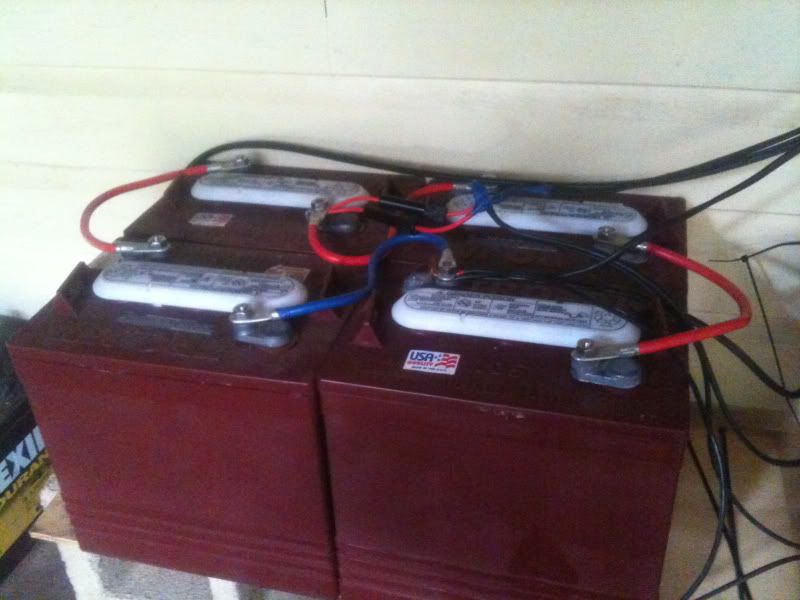
Also added two more trojan T105s, for a total of 440 AH.
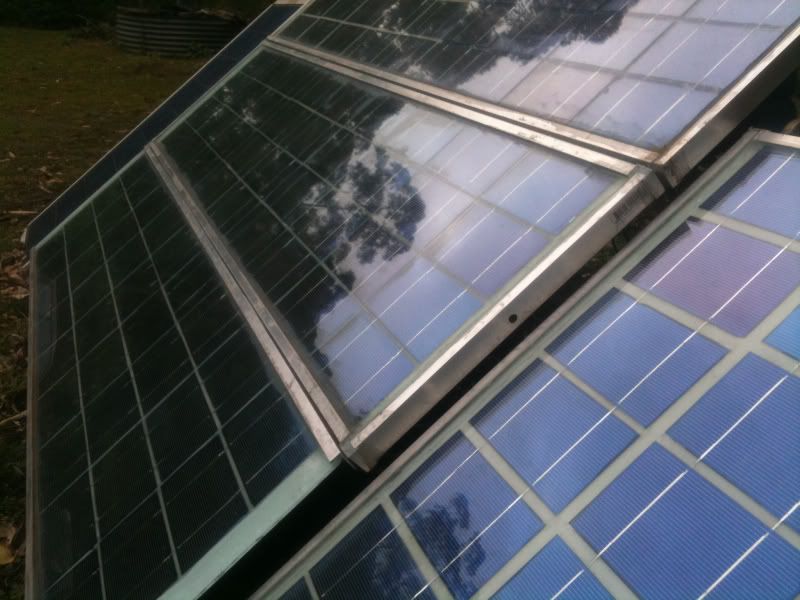
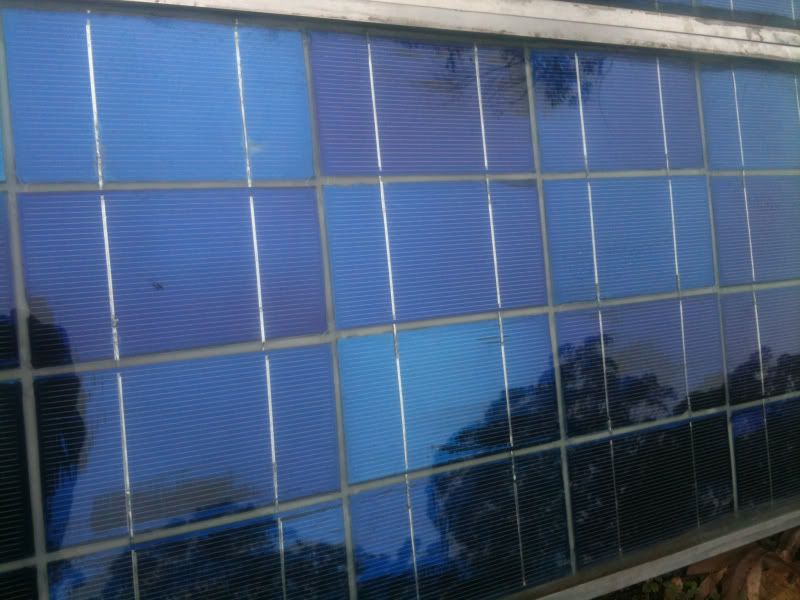
What I have noticed is the paint on the back of the silicone is going yellow, but to be expected I guess.
Im pretty happy with the panels so far, almost a year in the weather, no moisture, no cracks in the cells, fingers crossed.Leave a comment:
-
Howdy,
The frames are just aluminum edges , Ive just siliconed them to the glass. On the corners Ive just cut small bits and siliconed them on to make the corners, it all seems pretty solid and has held well.Leave a comment:
-
jestronix what exactly did you use to make your frames? If you could post some instructions and where you got the materials that would be great.Leave a comment:
-
So far im happiest with sealing between and the back of cells in electrical grade caulk. The painted ones were slightly effected by chemicals in the paint.Leave a comment:
-
So how have the panels looked since then. I have a 108 cell panel in the process of making and I am confused on the way to go on sealing them.Leave a comment:
-
updates
hi all, a few updates, have all the panels up now, 4 x 60w DIY. 2 x 40w jaycar, 1 x 40w BP (28 years old, puts in half amp lol)
This is the make shift stand for winter, trees are getting cut down next year so can mount them up on the roof. one panel looks off color, its not, i just used some black paint behind half the panel, ran out!
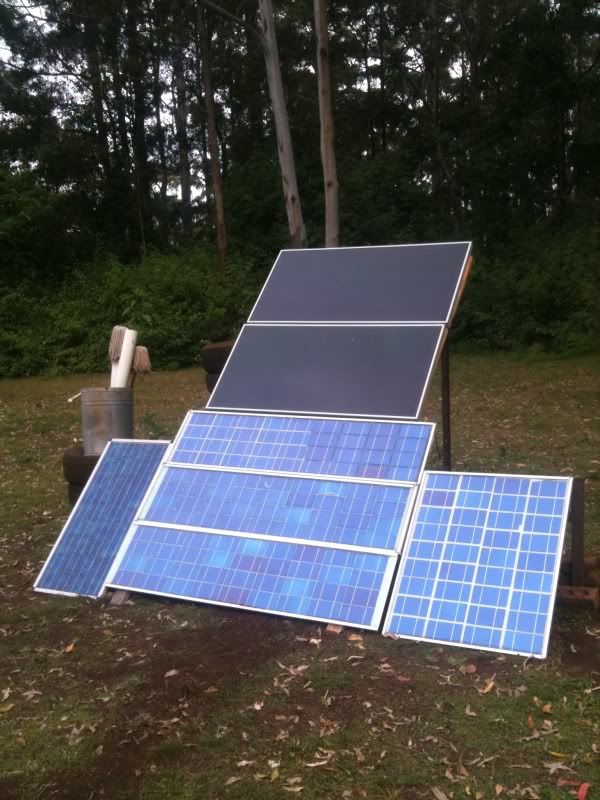
The bottom center panels are the best, I got the spacing and alignment right on those.
Close up of the cells after 9 months or so.
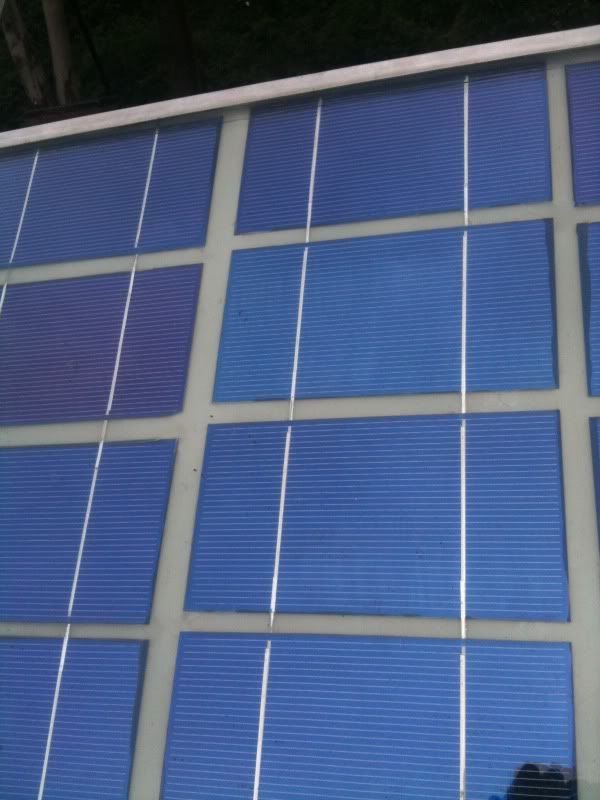
Very impressed with the ones that I totally sealed in silicone caulk not one hint of weathering. The painted ones are fine, but slight color change around the edges of the cells, seems to have slowed down though, must have been some chemicals in the paint. The dark edges on this shot are just the silicone on the front of the cells. These cells are direct to the glass.Leave a comment:
-
Great looking panels, Jessie! We played around with various methods of attachment and waterproofing. Realizing that EVA film is essentially a sheet of hot glue, we played with using regular hot glue guns to attach the cells to a small sheet of glass. Worked OK, left it out on a metal roof in August without a failure, but the temperatures on a roof are near the melt temperature specs of standard dime-store hot glue. There is a high temperature hot glue available, and in bulk it is pretty cheap, but the low temperature glue captures 99% of the market, so the high temperature glue is hard to find. However, if you could make this work, it might be a lot easier than a sheet of EVA plus a big home-brewed vacuum setup.Leave a comment:
-
Hi Lawrence,
I guess the DIY scene hasnt been going long enough to see if the sylgard builds will last. BP used sylgard on their early panels, which are still going. So there is hope, but it gets close to the price of cheap ebay panels when you use sylgard.
I wouldnt trust cheap ebay panels or my own DIY on my roof, but if you have the space you could located them out of harms way.
I moved away from sylgard as I wanted to see if I could go really cheap and still make them last.
Its only six months in and I can see a light dullness on the gridlines of the cells, where the caulk meets the cells, it hasnt effected output yet. If they last 5 years, they have done their job, they were 5 times cheaper to make then a good BP panel.
I have two panes of glass left, and a tub of sylgard, so I guess Ill do two sylgard panels and see how they go.Leave a comment:
Copyright © 2014 SolarReviews All rights reserved.
Powered by vBulletin® Version 6.1.3
Copyright © 2025 MH Sub I, LLC dba vBulletin. All rights reserved.
Copyright © 2025 MH Sub I, LLC dba vBulletin. All rights reserved.
All times are GMT-5. This page was generated at 02:56 PM.

Leave a comment: